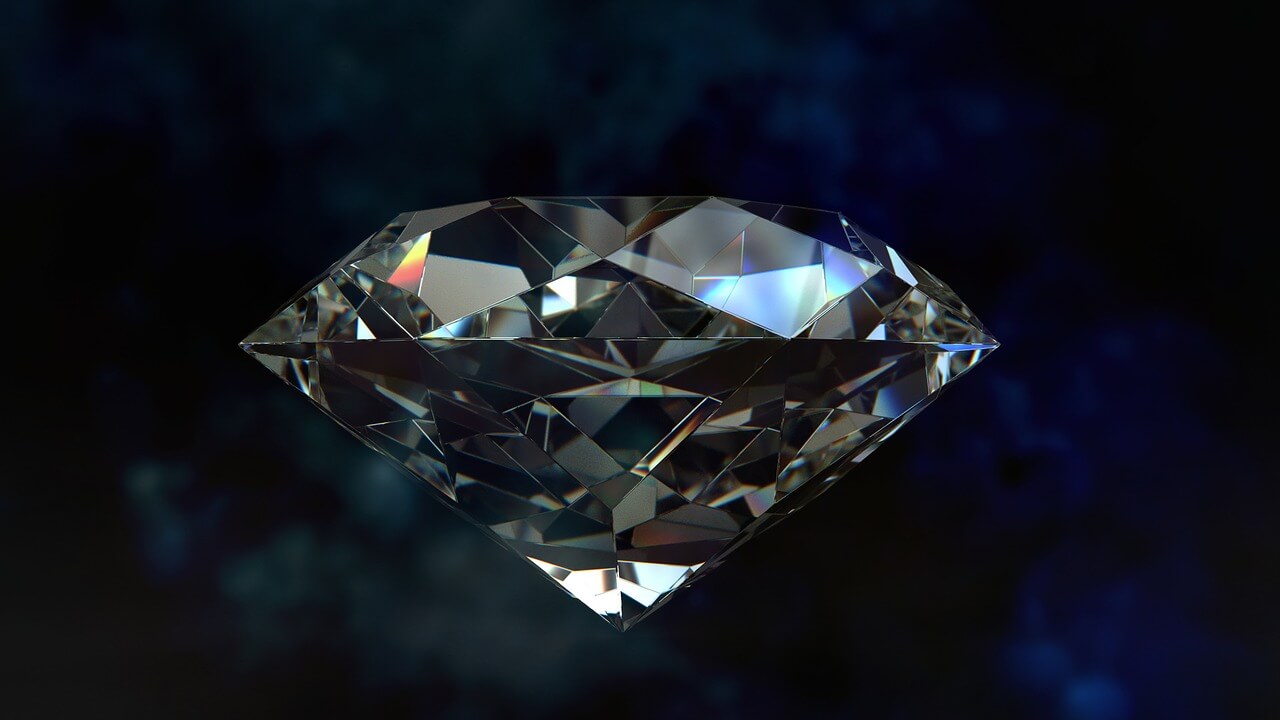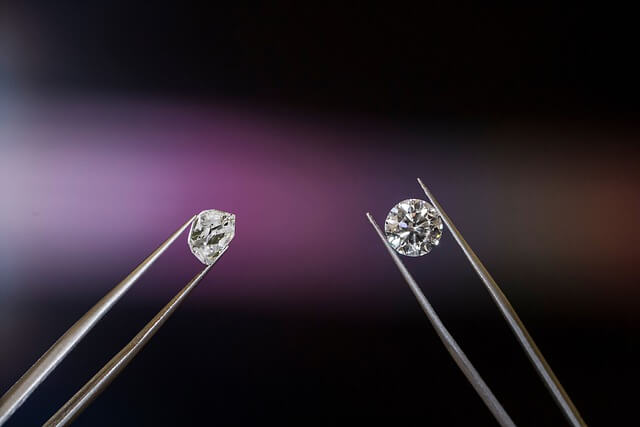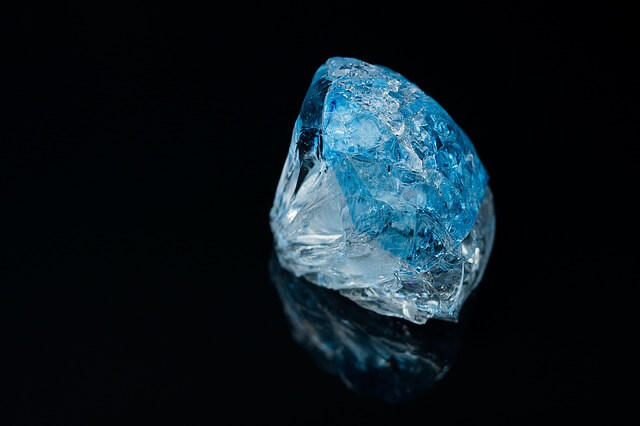What is a diamond? Where do people use diamond, uses of diamond as a gem and industrial uses.

Source: pixabay.com
Diamond; the hardest of all known substances, is a mineral composed solely of carbon. The word “diamond” is a corruption of the Greek word adamas, which means “unconquerable.” The ancient Greeks probably gave this name to a variety of hard bright substances, including metals. It was first applied to the substance known today as diamond by writers such as the Roman naturalist Pliny, because of the hardness of the mineral and the mistaken belief that it could not be shattered by a blow— a test often used for diamonds in the past, with sad results.
USES OF DIAMOND
Diamond is the best-known gem and the one that is most commonly used in engagement rings. It is the birthstone for April. Because the mineral is the hardest substance known, diamond dust has long been used to cut diamond crystals into gems. In the 20th century the mineral has become the most important industrial abrasive; it is virtually indispensable as a grinding material in a wide range of industrial applications. Diamond today is monetarily one of the major items in the international mineral trade. Some of the demand for the abrasive is being met by the production of synthetic diamond.
Use as a Gem:
The first known discoveries of diamonds were in ancient India. These early finds were kept loose or were mounted in their natural state, except when lapidaries occasionally ground a flat surface or shaped a crystal according to whim. It was the rarity of the stones, their exceptional hardness, and at times the presence of a delicate color that made the people of India value them. Most diamonds were owned by rulers.
The beauty and hardness of diamonds gave rise to the notion that they enabled their wearers to acquire certain virtues. For example, a diamond was supposed by some people to impart invulnerability to its owner and to protect a warrior in battle. Other legends were that possession of a diamond would prevent mental illness or ward off the effects of a poison.
In medieval times, diamond was ranked below several other gem materials—especially ruby, emerald, and pearl. Also, diamond was only known to occur in India, so that its availability elsewhere was limited. The full beauty of the stone was not really recognized until the development of the gem shape called the “brilliant cut,” toward the end of the 17th century, by the Italian lapidary Vincenzo Peruzzi.
With the application of regularly shaped designs that revealed the brilliancy of the gem, diamond came into its own. Then, in the early part of the 18th century, the mineral was found in greater abundance in Brazil; this discovery brought it to the attention of a much larger market as a gem material. The general adoption of diamond as the chief material for engagement rings developed gradually thereafter.

Source: pixabay.com
Industrial Uses:
Diamonds for industrial uses are more important than gem diamonds, although they are less profitable. Industrial diamonds are a by-product and depend on a prosperous gem industry to justify their recovery; the industrial varieties represent 75% to 80% of output by weight, but only 25% to 30% by value, of the total diamond market.
Industrial Classifications:
Industrial diamonds are used in several forms. Crystals having no special name range in size from 200 crystals per carat to single crystals of 10 carats or more. The smaller ones (mostly under half a carat) are rather regular in shape; the larger ones may have various shapes and properties that suit them for special uses. Some of the specialized applications are for bearings, knife edges, ruling tools, phonograph needles, hardness-testing devices, and glass cutters.
Crushing bort is a low-grade natural diamond material of indefinite size and shape. It is broken into small fragments or crushed to a,! powder, and is used for grinding, cutting, and polishing operations; synthetic diamond is also much used for these purposes. Originally, the diamond craftsman was the sole user of such powder and grit, and he crushed his own bort y rough means. Sieves now separate the coarser sizes, and the finer ones are separated by sedimentation, elutriation (lifting by the flow of water), or centrifuge. These methods grade the particles according to their mass.
Two other familiar kinds of industrial diamond are ballas and carbonado (or simply carbon). Ballas is nearly round but may have to be split before being used to shape—to “true” —abrasive wheels. Carbonado, found almost solely in Brazil, occurs as an irregular mass that lacks the consistent crystal structure (and hence the cleavage weakness) of other diamonds.

Source: pixabay.com
Kinds of Industries:
Henry Ford was the first to discover that, on a large scale, diamond is actually the cheapest industrial abrasive for long-term use in spite of its high initial cost. Today the automotive industry is the principal buyer of industrial diamond, and Detroit has more diamond-tool dealers than any other city in the world. Indeed, there are more than 15 different uses for the mineral in an automobile factory. Aircraft production has parallel opportunities for the use of this unexcelled abrasive.
The machine-tool industry is in the forefront of diamond research. Antifriction bearings involve uses similar to those for automobiles and machine tools. The glass and optical industries were early users of diamonds, as for grinding mirrors or for sawing spectacles. A major application of larger diamonds is in diamond drills used in prospecting for minerals, in mining ores, and in drilling oil and gas wells.
The electronics industry and the electrical industry are both users of industrial diamonds. Textile printers use them to cut patterns. Dentists and physicians use diamonds to cut delicate bone and tissue, and jewelers use them to fashion gems—including other diamonds. Finally, the manufacture of many common household products involves the use of diamonds that are too flawed or discolored to appear in jewelry.